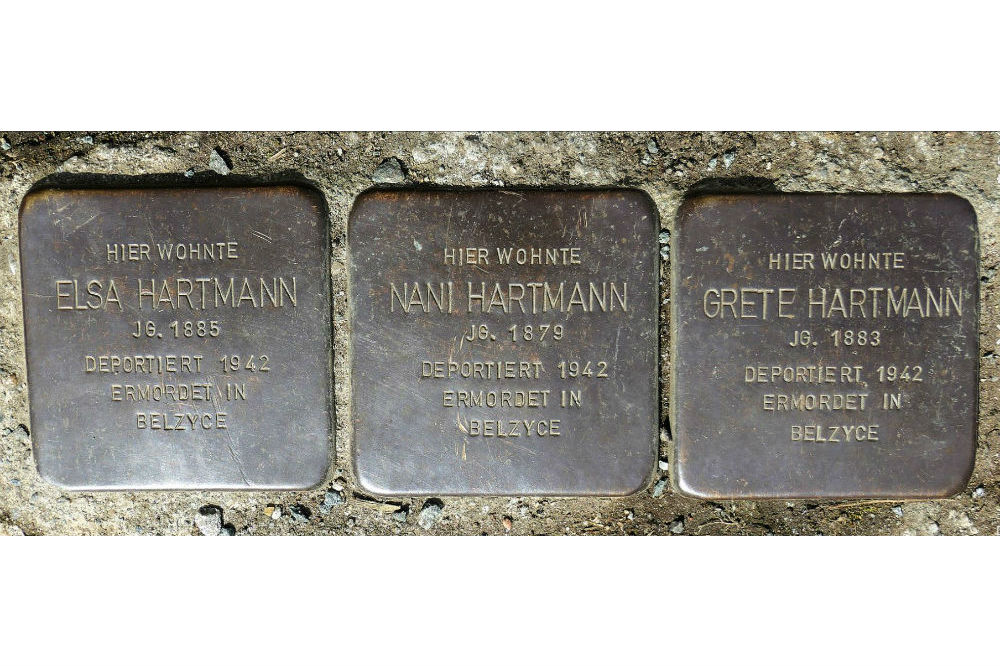Stumbling Stones Brauhausstraße 1
These memorial plaques (Stolpersteine or stumbling stones) commemorate three sisters:
* Elsa Hartmann, born 1885, deported 1942, murdered in Belzyce.
* Nani Hartmann, born 1879, deported 1942, murdered in Belzyce.
* Grete Hartmann, born 1883, deported 1942, murdered in Belzyce.
Arnold and Flora Hartmann had five children born in the late 1800s. The parents died in the 1920s. Twenty years later, all five of their children were murdered in the Holocaust.
Three sisters – Nani, Grete, and Elsa – lived at this address. Nani Hartmann’s full name was Melanie Selma Hartmann. Fanny Margarrete was called Grete. Elsa was Elsa. Their great-niece reported that Nani was a salesclerk and Elsa and Grete were housewives.
All three were deported on 10 May 1942 in cattle cars on the same freight train that went from Weimar/Leipzig and arrived in Lublin two days later. Passengers then walked 4-5 hours from the train station to Belzyce. This and other deportations doubled the Jewish population in Belzyce to about 4,500. Harsh conditions of overcrowding and poor food and sanitation meant many died of illness and starvation. Mass deportations to death camps began in 1942. One year later, there were no Jews left in Belzyce.
Their two brothers were murdered: Hans Hartmann (1888 – 1941 in Dachau), and Arthur Hartmann (1887 – 1941 in Ghetto Kowno in Lithuania). Fortunately, the family line did not end. Hans and Regina Hartmann were able to save their sons with the help of Kindertransport.
No other information was found about the lives of the three Hartmann sisters.
Stolpersteine for Hans and Regina Hartmann are also in Chemnitz, at Hübschmannstraße 26.
"Stolpersteine" is an art project for Europe by Gunter Demnig to commemorate victims of National Socialism (Nazism). Stolpersteine (stumbling stones) are small, 10x10cm brass plaques placed in the pavement in front of the last voluntary residence of (mostly Jewish) victims who were murdered by the Nazis. Each plaque is engraved with the victim’s name, date of birth, and place (mostly a concentration camp) and date of death. By doing this, Gunter Demnig gives an individual memorial to each victim. One stone, one name, one person. He cites the Talmud: "A human being is forgotten only when his or her name is forgotten."
For more information and pictures, please visit Stolpersteine Chemnitz (in German).
Do you have more information about this location? Inform us!
Source
- Text: Fedor de Vries & Anne Palmer
- Photos: Dr. Bernd Gross
- Yad Vashem Central Database of Shoah Victims’ Names
- Geni.com
- Yad Vashem: Transport Train Da 27 from Weimar to Belzyce
- Stolpersteine.eu
Nearby
Monument
- Memorial Old Synagogue Chemnitz - Chemnitz
- Memorial Victims National-Socialism - Chemnitz
- Memorial Perished German Prisoners-of-War - Chemnitz





